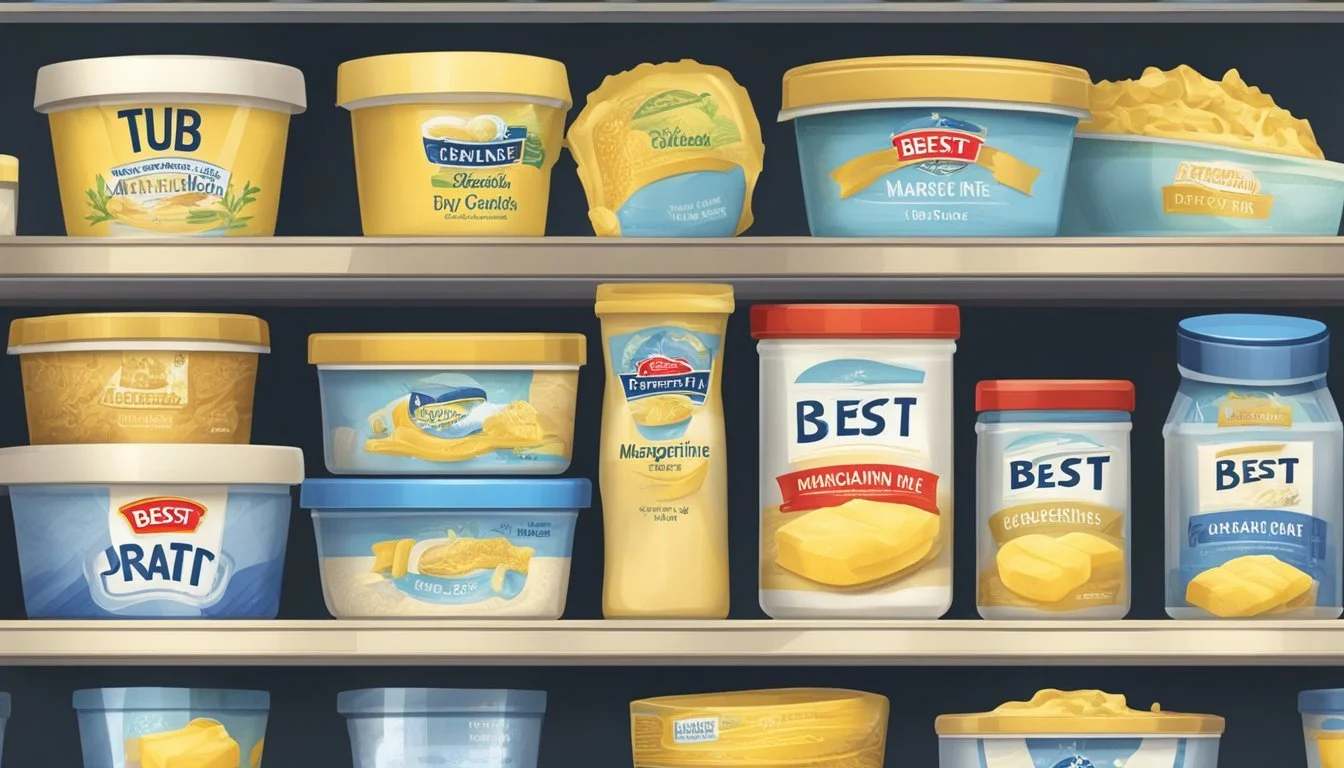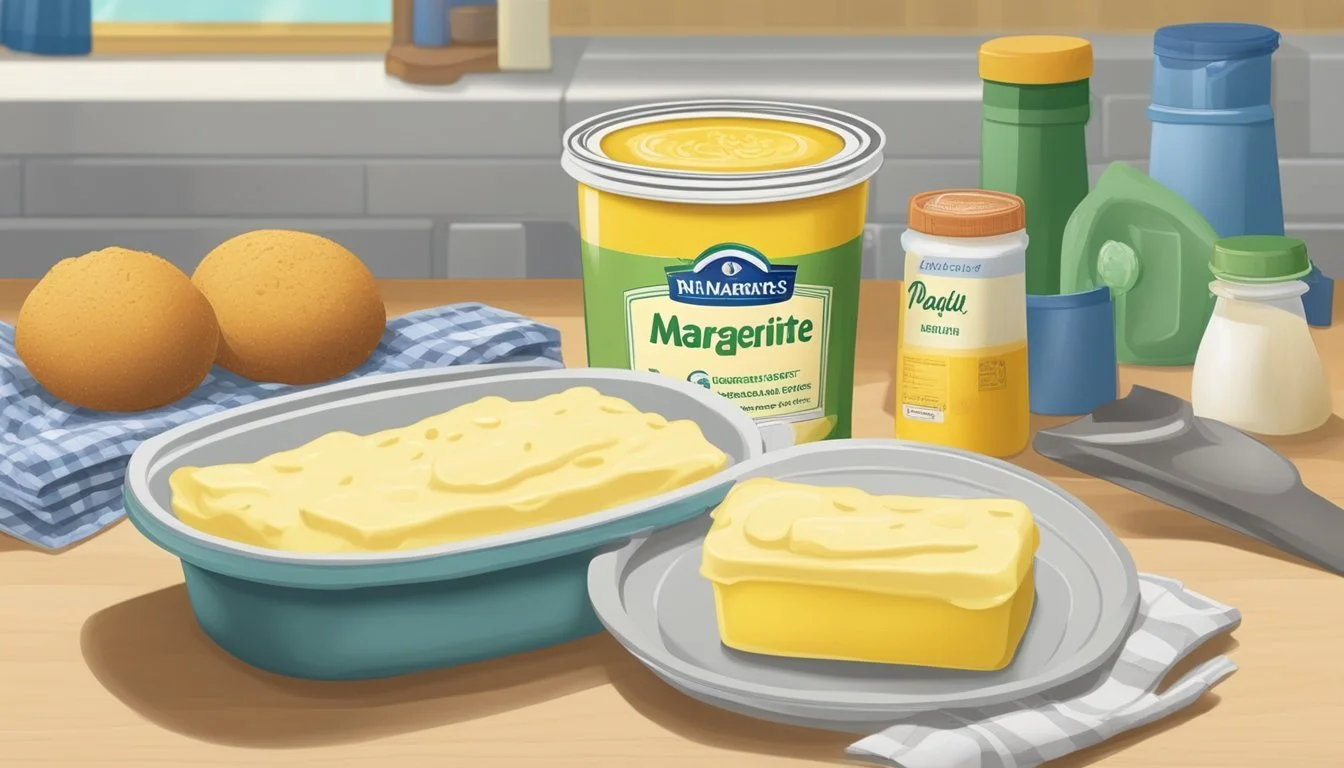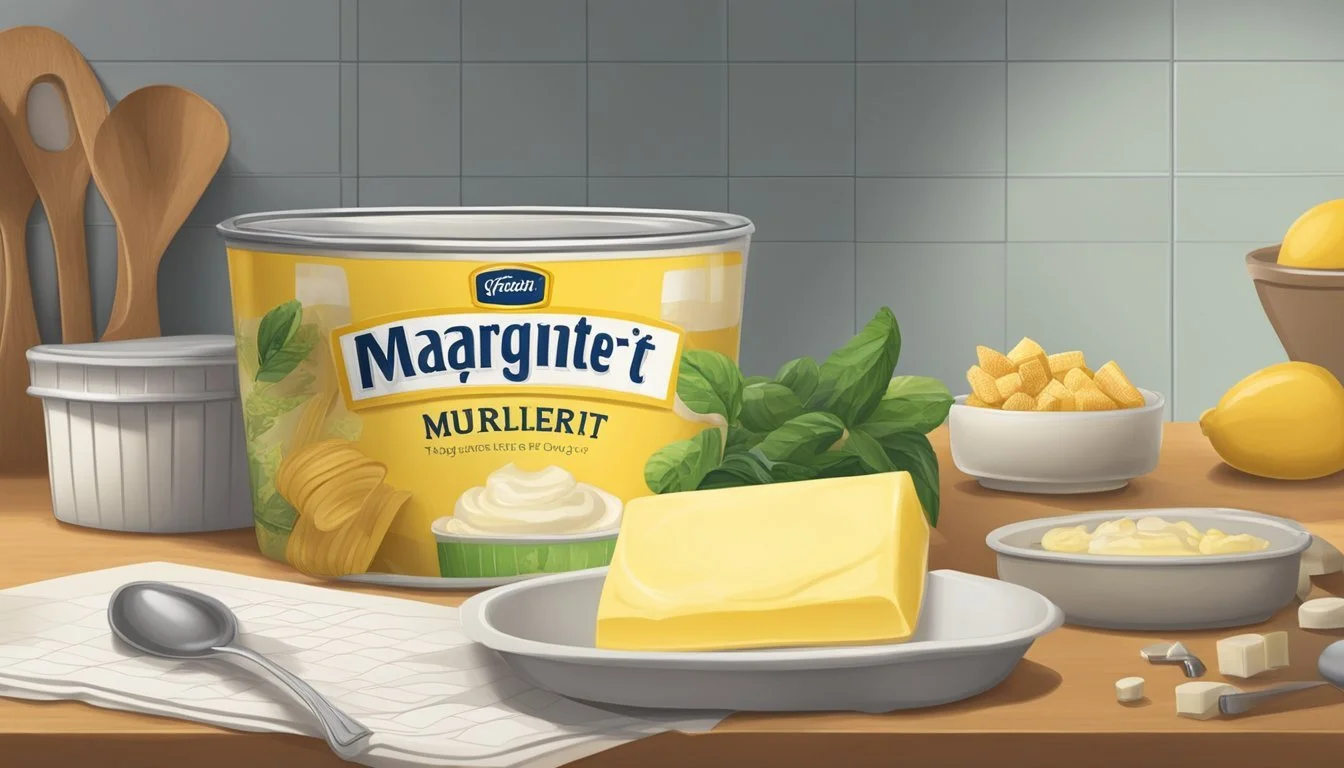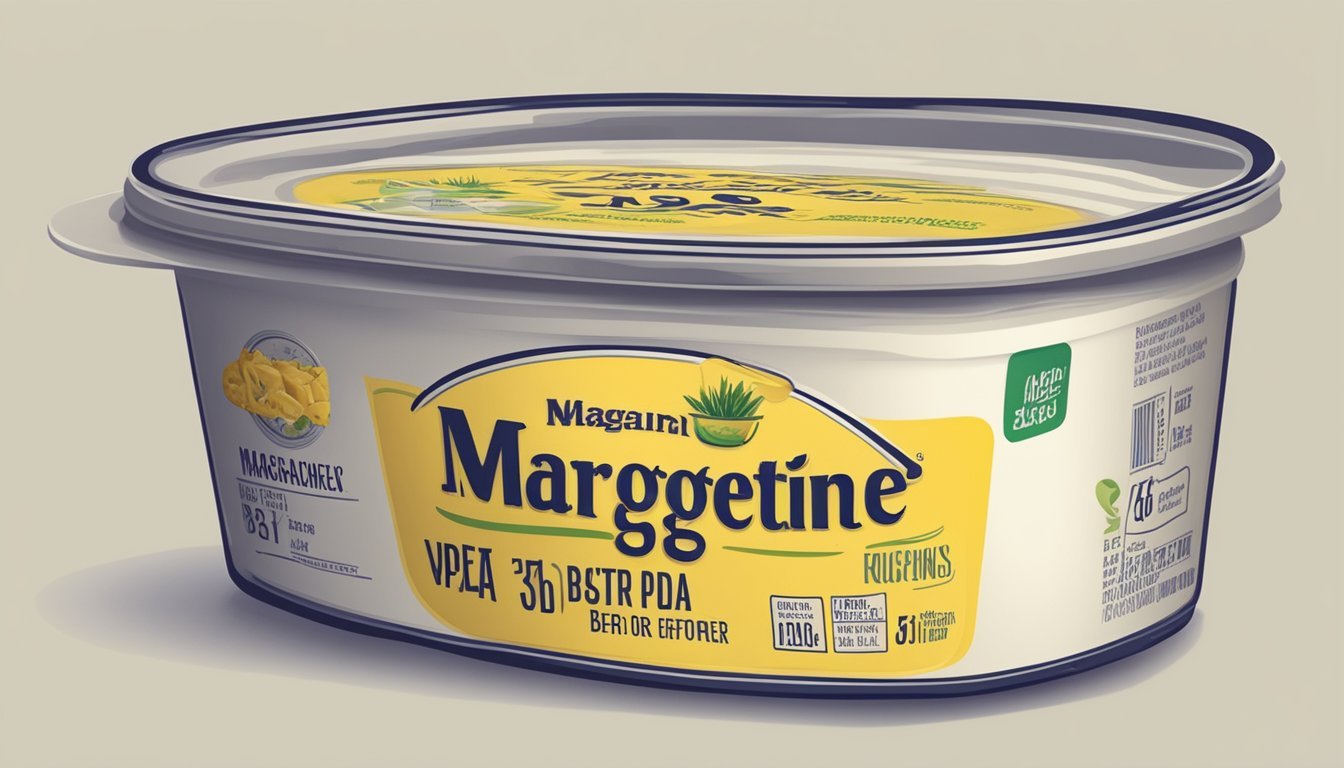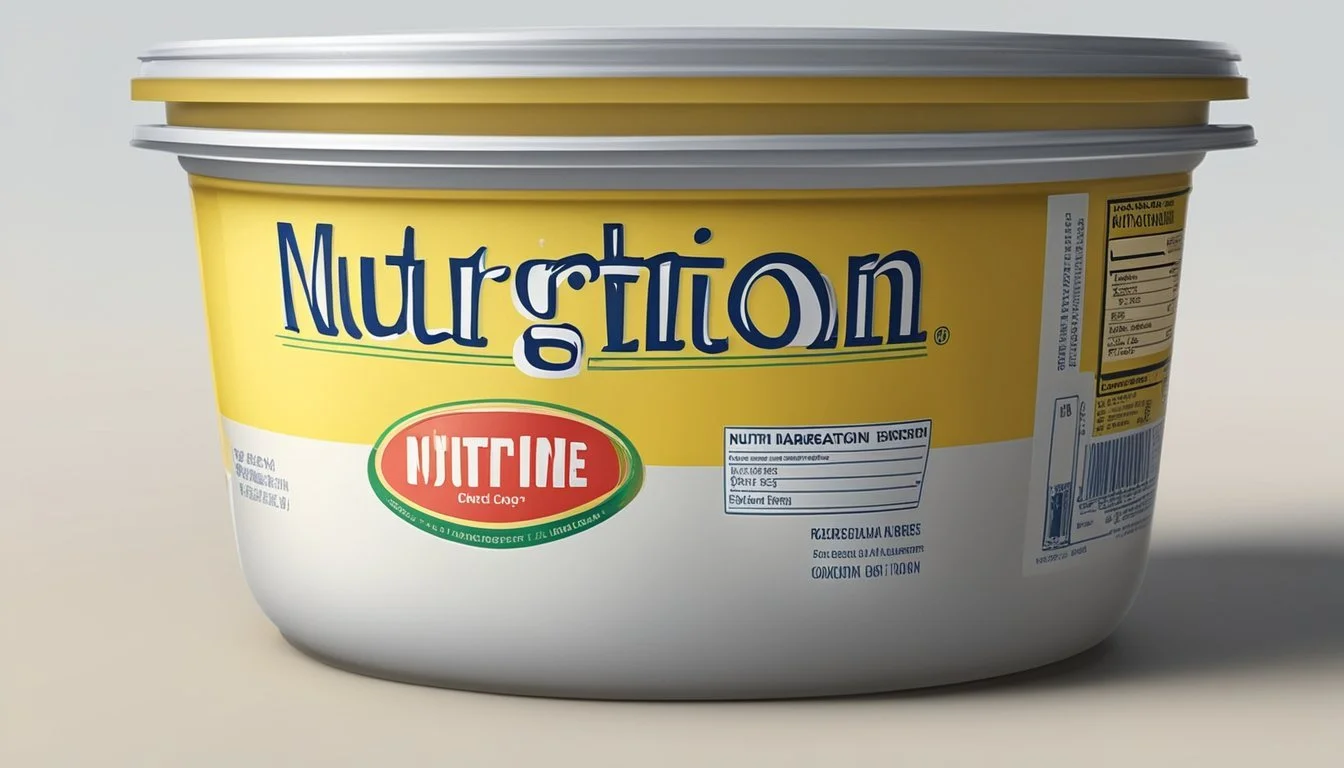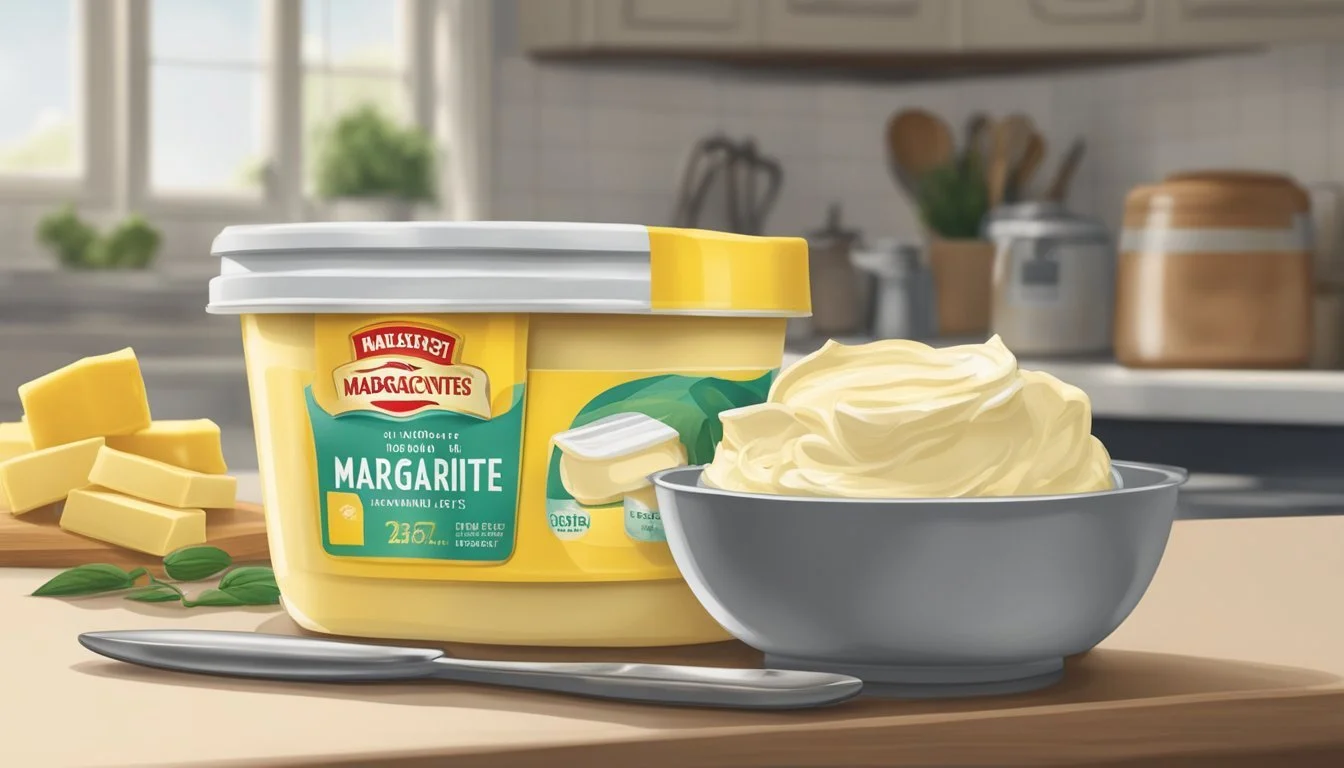How Long Does Margarine Last?
Shelf Life and Storage Tips
Margarine is a popular butter substitute known for its versatile use in cooking, baking, and as a spread. The shelf life of margarine is a subject of practical interest to consumers seeking to balance food quality with safety. Typically, it has a longer shelf life than butter due to its higher proportion of vegetable oils and the presence of preservatives. When stored properly, unopened margarine can remain at peak quality for several months.
Once opened, margarine's exposure to air, moisture, and potential contaminants can accelerate deterioration, leading to a shorter shelf life. In the refrigerator, an opened container of margarine can stay fresh for about 1 to 2 months. Though margarine may not spoil immediately after its best-by date, it's recommended to consume it within a reasonable timeframe to ensure both safety and taste. In the freezer, margarine can maintain its quality for 6 to 8 months, offering an extended storage option without significant changes to its texture or flavor.
The stability of margarine's shelf life hinges on proper storage conditions. Refrigeration is crucial, as it slows down the oxidation process and prevents the growth of microorganisms. Consumers are advised to keep margarine away from direct light and heat sources, as these can promote rancidity and degradation. By adhering to storage guidelines and heeding best-by dates, margarine remains a convenient and enduring staple in many kitchens.
Understanding Margarine
Margarine is a non-dairy alternative to butter, often used for spreading, baking, and cooking. It is made from vegetable oils and contains less saturated fat than butter.
Composition and Varieties
Margarine is primarily composed of refined vegetable oils, such as soybean, corn, or canola. These oils undergo a process called hydrogenation, which solidifies the liquid oils and increases the product's shelf life. The composition may also include water, salt, emulsifiers, and sometimes milk proteins or solids. Varieties of margarine may range from soft, spreadable types to firmer sticks, with fat content adjusting its suitability for different culinary applications. They can be classified into different categories:
Regular Margarine: Standard table spread with a typical fat content of about 80%.
Light or Reduced-Fat Margarine: Contains less fat, often made with additional water or air incorporation.
Non-Hydrogenated Margarine: Made without the hydrogenation process to avoid trans fats.
Comparison to Butter
Butter is a dairy product made by churning cream from cows, containing a higher percentage of saturated fat and dietary cholesterol. Margarine, on the other hand, although originally invented to mimic butter, offers a different nutritional profile due to its plant-based oils. Here's a quick comparison:
Saturated Fat: Butter has more saturated fat compared to margarine.
Trans Fats: Traditional margarines had trans fats due to hydrogenation, but many modern varieties have reduced or eliminated these.
Flavor: Some people notice a taste difference; butter has a rich, creamy flavor, while margarine can vary but is often neutral.
Use: Both can be used in cooking and baking, but different fat content and melting points may affect the outcome.
The choice between butter and margarine may depend on dietary restrictions, cooking needs, and personal taste preference.
Margarine Shelf Life
Margarine's durability varies depending on whether it's opened or unopened, and it can even be frozen to extend its shelf life. The expiration date is an indicator of when the highest quality is guaranteed by the manufacturer, but proper storage can lengthen this period.
By Types
Unopened Margarine: Typically lasts for 6-9 months beyond the "best by" date when stored in a cool, dry place.
Opened Margarine: Once opened, margarine maintains its quality for 1-2 months when kept refrigerated.
Frozen Margarine: Freezing margarine can extend its shelf life to 6-8 months.
Factors Affecting Shelf Life
Storage Conditions: Margarine should be kept in a cool, dry location and refrigerated after opening to preserve quality.
Temperature Fluctuations: Frequent temperature changes can compromise the texture and flavor, risking spoilage.
Storage Guidelines
Proper storage of margarine is essential to maintain its quality and extend its shelf life. The following guidelines cover the best practices for storing margarine in refrigeration, freezing, and pantry conditions.
Refrigeration Best Practices
Refrigeration is the recommended storage method for margarine. In the fridge, margarine should be kept at a consistent temperature and stored in its original packaging to prevent it from absorbing odors. Ideally, one should place margarine in the designated butter compartment or wrap it in airtight containers to preserve freshness. Opened margarine can last for about 1-2 months in the refrigerator.
Freezing and Its Impact
Freezing margarine can extend its shelf life to 6-8 months. To freeze margarine, one should ensure it is tightly sealed in its original packaging or a freezer-safe container. When ready to use, thaw it in the refrigerator for the best texture. It is important to note that freezing may alter the texture of margarine, making it more suitable for cooking rather than spreading.
Pantry Storage
Storing margarine at room temperature is not generally recommended, as it can lead to faster spoilage and potential bacterial growth. However, if room temperature storage is necessary, one should keep margarine in a cool, dry place away from direct sunlight and heat sources. Pantry storage should be reserved for unopened margarine, which can remain stable for a limited time depending on the type and brand.
Spoilage Indicators
Identifying spoilage in margarine is crucial for food safety and quality. Consumers should consistently check for any signs that indicate the product may no longer be suitable for consumption, such as changes in appearance, texture, or aroma.
Visual and Texture Changes
Margarine that has gone bad may exhibit visual changes including discoloration or the presence of mold. These visual cues are often accompanied by alterations in texture, such as separation or an unusual hardness that wasn't present before.
Smell and Taste
In terms of aroma, margarine that has turned rancid will have an off smell that is easily noticeable; this is a clear sign of spoilage. Similarly, an off taste is a telltale sign that the margarine should no longer be consumed, as it indicates the product has gone past its prime and could potentially pose a health risk if ingested.
Health and Safety
When it comes to margarine consumption, understanding the implications for health and safety is crucial. Margarine is a non-dairy product, but like all food items, it can become unsafe to eat once it expires.
Consuming Expired Margarine
Expired margarine poses several risks. Over time, it may develop harmful bacteria that can lead to foodborne illnesses. Furthermore, expired margarine can turn rancid, producing an unpleasant taste and smell. Although consuming a small amount of expired margarine may not always lead to immediate health issues, it is not recommended to consume it as the risk of adverse effects increases.
Food Safety Tips
To ensure safety, follow these guidelines:
Storage: Keep margarine in the refrigerator at or below 40°F.
Expiry: Heed the expiration date and avoid use beyond this period.
Visual Check: Inspect for mold, discoloration, or any unusual odors.
Airtight Containers: Use them to protect against contaminants and odors.
It is always better to err on the side of caution and discard any margarine that shows signs of spoilage or has exceeded its expiration date.
Frequently Asked Questions
In this section, you will find precise answers to common inquiries about the lifespan and post-expiration usage of margarine, accompanied by longevity-enhancing tips.
Longevity Tips
Proper storage is paramount to extend the shelf life of margarine. It should be kept in the refrigerator, away from direct light and sources of heat. To maintain its quality, one should follow these specific tips:
Seal the container tightly after each use to prevent exposure to air.
Use clean utensils to ward off contamination.
Usage Post-Expiration
Margarine may still be usable after the expiration date if there are no signs of spoilage. Here are key points to consider:
Check for off smells or discoloration before using past the printed date.
Physical separation or texture changes could indicate that the margarine has gone bad.
Avoid consumption if the product has an unusual taste or if doubt persists about its safety.
Culinary Applications
Margarine serves as a versatile element in culinary applications, particularly noted for its role in baking and cooking. It acts as a viable substitute for butter and other fats, often preferred for its favorable consistency and shelf-stable properties.
Baking and Cooking
In baking, margarine is commonly used due to its ability to create tender pastries and cakes. Bread recipes may call for margarine to add moistness, and its melting point provides an appealing texture to baked goods. In the kitchen, it's employed for its non-dairy composition, making it ideal for those with dietary restrictions.
Cooking applications include:
Sauteeing vegetables
Creating roux for sauces
Frying or grilling proteins
The presence of margarine in a baking or cooking recipe can affect the outcome in terms of texture and flavor.
Alternatives and Substitutes
While margarine is a staple in many kitchens, alternatives like olive oil and other plant-based oils are sometimes used for their distinct flavors and health benefits. These substitutes come in handy especially when margarine isn't available or when one desires a different taste profile.
Common substitutes for margarine include:
Olive oil - for sauteing and dressings
Butter - for richness in baking
Canola oil - in baking for a neutral taste
Each substitute can impact the nutritional content and flavor of the dish, thereby requiring adjustments in the recipe.
Shopping and Storage Tips
When selecting and storing margarine, one should prioritize freshness and storage longevity. Choose wisely and store correctly to ensure the margarine retains its quality and flavor.
How to Choose Margarine
When shopping for margarine, consumers should look for products with the most distant "best by" or "use by" dates. This ensures they are getting the freshest product available. It is advisable to inspect the packaging for any signs of damage or tampering, which could affect the margarine's longevity.
Proper Sealing and Storage
Once purchased, margarine's shelf life can be maximized by storing it in an airtight container or in its original packaging, provided the seal is intact. It should be placed in the designated butter compartment of the refrigerator, away from items with strong odors to protect its flavor. If the original package is not resealable, transferring the margarine to a container with a tight-fitting lid is recommended. For long-term storage, margarine can be frozen; unopened containers may last for 6-8 months in the freezer.
Nutrition Information
Margarine is often used as a substitute for butter and comes with its own set of nutritional characteristics. Typically, margarine is created from vegetable oils, and as such, it does not contain cholesterol, which is found in animal products such as milk. Instead of dairy content, it contains various fats that are essential to consider in one's diet.
The calorie content of margarine varies depending on the brand and ingredients but generally falls within the range of 35-100 calories per tablespoon. This is comparable to butter, making portion control important for those monitoring their caloric intake.
Fats Breakdown Margarine’s fat composition is something consumers should be aware of. It generally has less saturated fat than butter. Saturated fats should be consumed in moderation as part of a balanced diet. A key advantage of margarine is its potential for containing no trans fat, especially when it is made from non-hydrogenated oils.
Table 1: Typical Fat Composition in Margarine (per tablespoon)
Type of Fat Amount Saturated Fat Varies (usually less than butter) Trans Fat 0g*
*Note: Check labels as some margarines may contain trace amounts of trans fat.
Margarine may also be enriched with vitamins and minerals such as Vitamin A and Vitamin D for added nutritional benefit.
In summary, when evaluating the nutritional information of margarine, one must examine the type and amount of fat present, caloric content, and absence of milk, recognising that margarine can have a place in a diet conscious of saturated and trans fats. It is advisable to read nutrition labels carefully to make informed choices.
Conclusion
When considering the shelf life of margarine, one can expect a generally consistent duration for its usability, subject to proper storage conditions. Unopened margarine typically has a shelf life of 4 to 6 months beyond the printed expiration date when kept refrigerated. Once opened, the timeline shortens, and consumers should aim to use the margarine within 2 to 3 months to ensure quality and safety.
Refrigeration is essential in preserving the integrity of margarine, and it should be stored in an airtight container to prevent it from absorbing other odors and flavors. After use, it should be wrapped or sealed properly to maintain freshness. Below, a summarized guide to the shelf life of margarine is presented:
Unopened Margarine:
Fridge: up to 4-5 months past expiration date.
Opened Margarine:
Fridge: approximately 2-3 months.
Signs that margarine has gone bad include a rancid smell, discoloration, or a sour taste. Consumers should always trust their senses and discard any margarine that seems off. It is also advised to always check the specific brand's guidelines as added ingredients or different production methods might affect the actual shelf life.



